|
Visit Syrendell's store on Teachers Pay Teachers! Artist Rick Tan will take you through a series of watercolor paintings honoring the element of water. The painting here is from a homeschooling lesson, expanding on the techniques he teaches in his watercolor painting series.
At the annual Alliance for Public Waldorf Education conference, Rick Tan hosts a watercolor painting class for teachers of public Waldorf schools. This year, he has titled it "Sunset and the Five C's" where he will instruct the class through a painting that evolves in complexity, modulating the five C's: color, control, character, content, and communion.
With each water color painting lesson that teachers engage their students in, Rick believes that the knowledge of the those five components of painting allow teachers the freedom to explore and express this medium with their students in a pedagogical and developmental way. The annual conference offers public Waldorf administrators and teachers to stay connected with each other and with the teachings of Waldorf education, always in the spirit of learning and bettering themselves to be of service to their students and families. This summer, the Alliance for Public Waldorf Education is offering a two-week professional development program for the public Waldorf community. Syrendell co-founder Rick Tan will be teaching a four-day workshop called "Watercolor and Social Wellness". Can watercolor in the classroom have a beneficial impact on student behavior and social development? Absolutely! Dr. Tan connects the milestones of child development through the grades with watercolor. "By attenuating the "5 C's" of watercolor painting - color, control, character, content, and communion, the class serves the growing child with learning values through the art of watercolor." From the Alliance website: Week 1: July 5-7 Fundamentals: The Essential Characteristics of Public Waldorf Education Week One of the Alliance’s Summer Professional Development is designed to provide an orientation and foundation for those new or fairly new to our work – teachers, school leaders, Board members, parent leaders, classroom assistants, and others. Over three days, we will provide essential information including an overview of the history and global development of Waldorf education, an explanation of the Core Principles of the Alliance for Public Waldorf Education, an introduction to child development and curriculum, and an examination of how Waldorf education meets the needs of the students of today. Participants will understand the importance of the role of the educator and the responsibilities that come with that, the principle of ongoing self-development, and the central role of the arts. Week One will also provide practical orientation to commonly used terms, structure of the school day, and school organization. Week One is a prerequisite for all grades or early childhood teachers new to Public Waldorf who wish to enroll in Week #2. Week 2: July 10-14 Early Childhood through 8th-Grade, Leadership and SPED/Student Support Tracks Week Two is designed for teachers and leaders in schools working out of the Core Principles of Public Waldorf Education. The schedule is designed as a professional development experience to support and prepare teachers for the upcoming school year. Instructors are all experienced in Public Waldorf education. They will share their knowledge and experience and will provide practical examples. Through these workshops, cohorts specific to each grade/area form, providing an important source of support for educators. Please expect to participate in all the courses for your grade/area, as the instructors are working together to build up a complete picture. Our hope is that new friendships and networks of support will form, new insights and practical skills will be gained and that participants will leave feeling refreshed and enthusiastic for a new school year. Week Two will also include an emphasis on student support and school leadership and administration. Week Two is suitable for anyone who will be teaching or providing leadership in a Public Waldorf school. Artists have always been fascinated with translating their three-dimensional world onto a two-dimensional plane, be it a sheet of paper, canvas, or wall. Look down a street, and you see the sidewalk on either side appear to converge into a point in the horizon. Event the walls of buildings, which would be rectangles face on, will appear as trapezoidal planes, shrinking as the planes move away from your line of sight. This is perspective, how our eyes perceive depth. It's all about our point of view.
We can create the illusion of depth with a drawing technique called linear perspective drawing. Amazingly, it all relies on a line and a point, specifically, the horizon line and the vanishing point. Following basic rules of perspective drawing, one can create realistic representations of the three-dimensional world. If you want to learn how to do perspective drawing, Syrendell offers a five-lesson course that will take you through one-point, two-point, and three-point perspective to create the drawings above. Perspective drawing has been around for centuries, even before the 14th century when the Renaissance masters began studying and applying the technique in many of their drawings and paintings. Shinrin-yoku is a Japanese term for "taking in the forest atmosphere". Being outside where you can breathe in the sky, feel the trees and rocks and soil, and be comforted and invigorated - this is the magic of nature. In your week, have you had a chance to be outdoors? To balance work/life and feed your soul, take time to go outside, with the intention of experiencing nature.
One way you and your family can do this is to go foraging. Collect pine cones, fallen leaves, acorns, branches, rocks, and moss. Now let your imagination kick in. Find scraps of wood, and with some simple woodworking tools, create a fairy bed, or sofa, or house. Embellish with found objects. At the end of the day, you will have realized you were outdoors, connecting with nature, AND connecting with the family and a collective imagination. You were taking in the forest atmosphere. As the fairy folk now grace your backyard with their magical presence, you can spend even more time outside to discover new ways of shinrin-yoku. See our course on making a fairy garden to get the kids outside! Cancelling Syrendell Summer Camp 2020 was one of the hardest decisions we had to make. Faced with an unprecedented pandemic, we based our decision on the following:
SSC thrives on social interaction. Instructors need to closely demonstrate the workshops, food prep and meals are communal, the kids want be with their friends. Managing and enforcing safety protocols would have posed a major challenge. We wash hands, we sanitize. We can even wear masks. But social distancing in the construct of our daily camp routine would have been near impossible to monitor and enforce. SSC holds itself to the highest integrity. The reason families return year after year is for our reliably unwavering commitment to the pedagogical approach of camp. We created a camp experience that embraces and enriches the child's whole being. We model respect in our interactions, we teach with compassion and encouragement, we create an inclusive, nurturing space for expression. With state mandates in place, we would be committed to instituting best practices in safety measures. We strongly believe that the safety protocols would compromise the integrity of camp. SSC is resilient. So mother nature had plans that were different from what any of us would have imagined for 2020! We could cave, shut down, panic. Or we could acquiesce and demonstrate human resiliency. Syrendell can look towards the future with reopening SSC for 2021. We could go online and offer workshops. We could reinvent teaching. The doom and gloom give us an opportunity discover new light and new hope. We feel for the families who had signed on with us this summer. We were all looking to see our children emerge from the lockdown and be with their friends, to engage in camp workshops, to interact, to smile. But there was something more powerful at play in 2020. We have to be at peace with that. Be well, Rick and Jennifer Tan Photo | Bethany Petrik Photography Syrendell Summer Camp 2020 promises another summer of wool, wood, food, friends, and fun! SSC2020 is the only Waldorf-inspired summer camp in northern California. Directors Rick and Jennifer Tan assembled an expert team of educators with Waldorf experience to create a program that is unique to summer camps. It has all the makings of why parents send their children to summer camps and more! Hands-on activities with handwork, woodworking, meal preparation, and an assortment of crafts are rotated through the day in an atmosphere of respect, friendship, and playtime in nature.
If interested in giving your children an enriching and memorable camp experience this summer, register your child today! Where else can a child learn about herbs, clay sculpting, nature journaling, and movement? Only at Davis Wholistic Learning Resources. Syrendell's Rick and Jennifer Tan have been partners with Wholistic Learning Resources based in Sacramento to bring enrichment classes to the Davis area homeschooling families. This fall-winter term opened the children's imaginations through clay creations and learning about herbs, among other fabulous classes. How great is it being at this 10-week term? As one child put it, "I wish I can be here every day!"
"You complete me," said the wool. "No, you complete me," said the wood. And thus the two elements went on with their love affair. Together, they were partners, equals in their relationship, intertwined, yet retaining their own personalities. Together, they lived in harmony. Together, they brought such joy to everyone who would see their sweet partnership! I've never worked in the medium of chalk until I became a Waldorf teacher. Several years ago, I witnessed a teacher at East Bay Waldorf masterfully create a chalk drawing on a blackboard with an Impressionist quality. I was hooked! As I experimented with different techniques, I discovered I preferred Realism in depicting my subject matter. This series of drawings is of a performer in the Cirque du Soleil, which I used for my Human Anatomy class in the middle school. Here are a few helful hints on how to create a large scale piece. Step One | Use a grid method. Traslating an image or photograph you like onto a blackboard is much easier if you scale it up with a grid, then draw in the outlines. Step Two | Rough chalk in the larger shapes to give a base color, something neutral. Step Three | Start layering chalk colors. The blackboard by virtue of being black gives an immediate depth to the work, so layering the colors becomes important to balance the black, allowing the colors to give the 3-dimensional quality. Step Four | Identify areas where light is hitting your subject. This further makes the subject pop, as contrast is made with the black and surrounding colors. Step Five | Add in detail chalk work. While layering the chalk involved the flat, long edge of the chalk, detailing will need the point end of the chalk. Step Six | Create a background for your subject. Here, I decided to clean up the board by adding in more black chalk as it made the performer appear to be in a spotlight in a darkened space. The background should complement the subject, unless the whole board is used to create an entire landscape or scene. |
Archives
June 2023
|


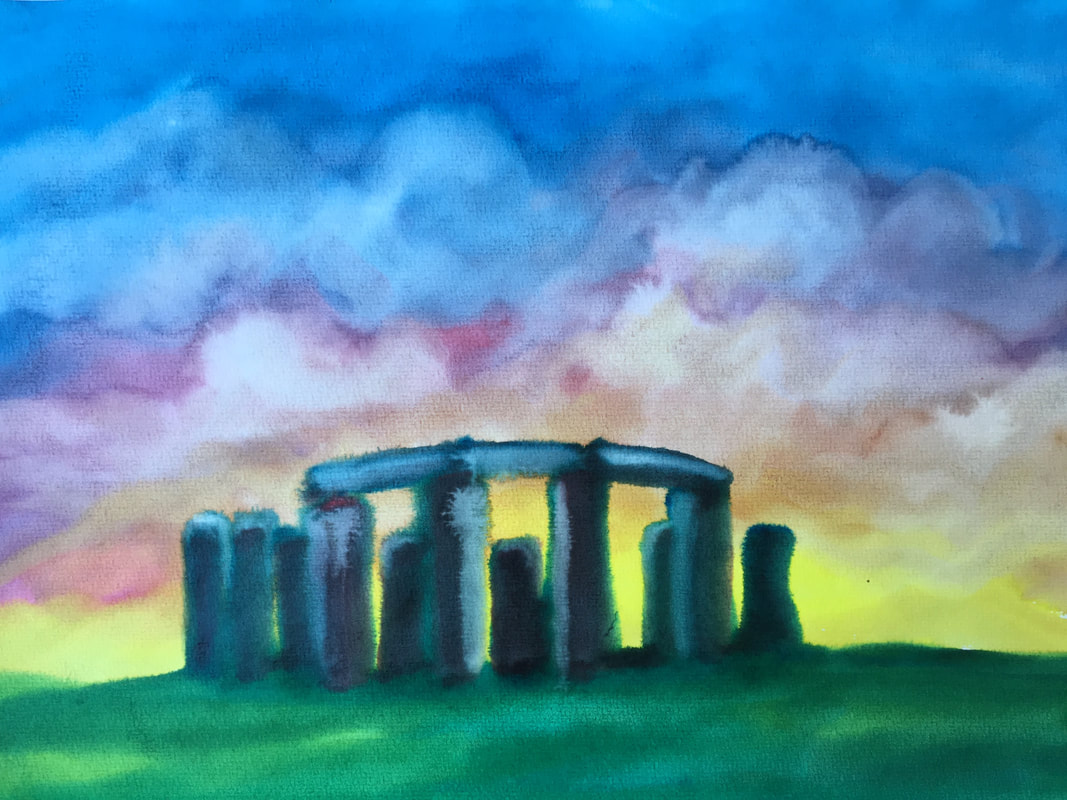

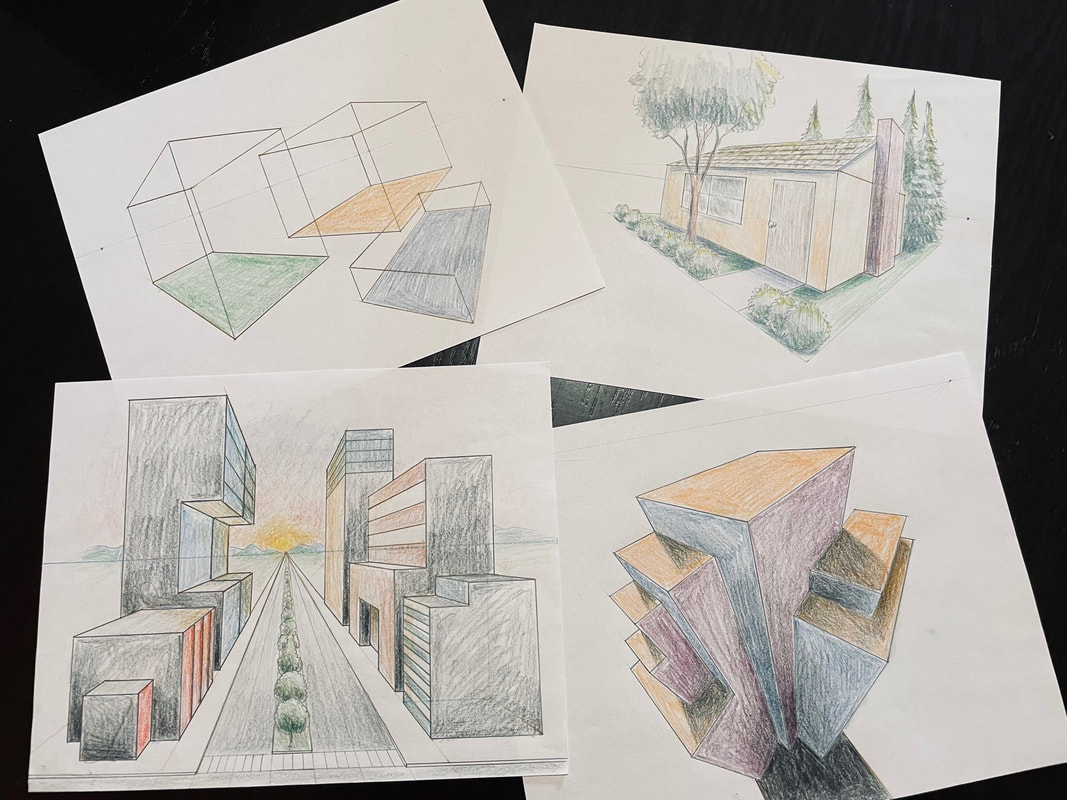






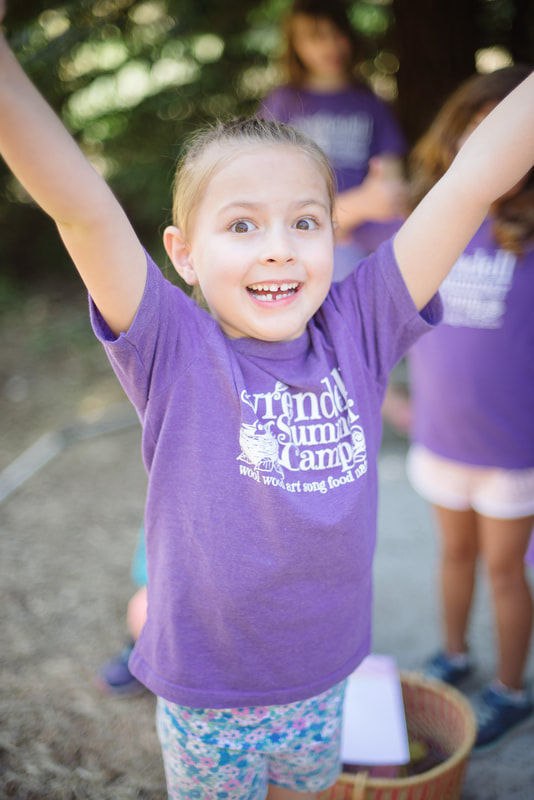
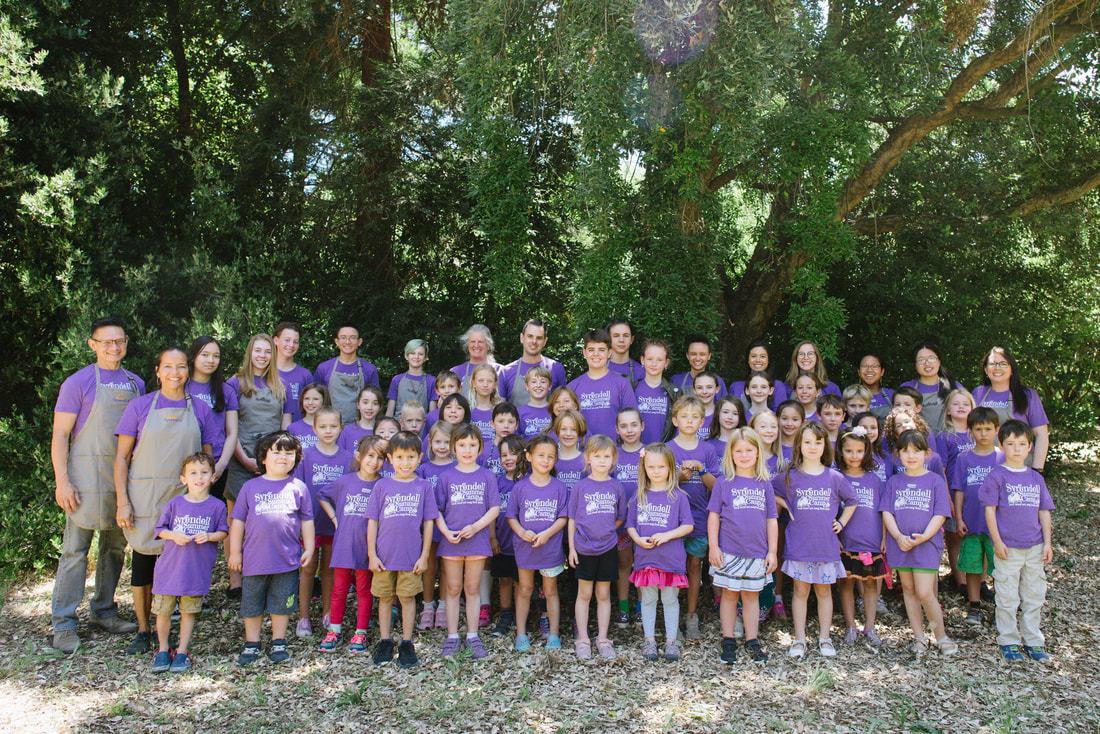
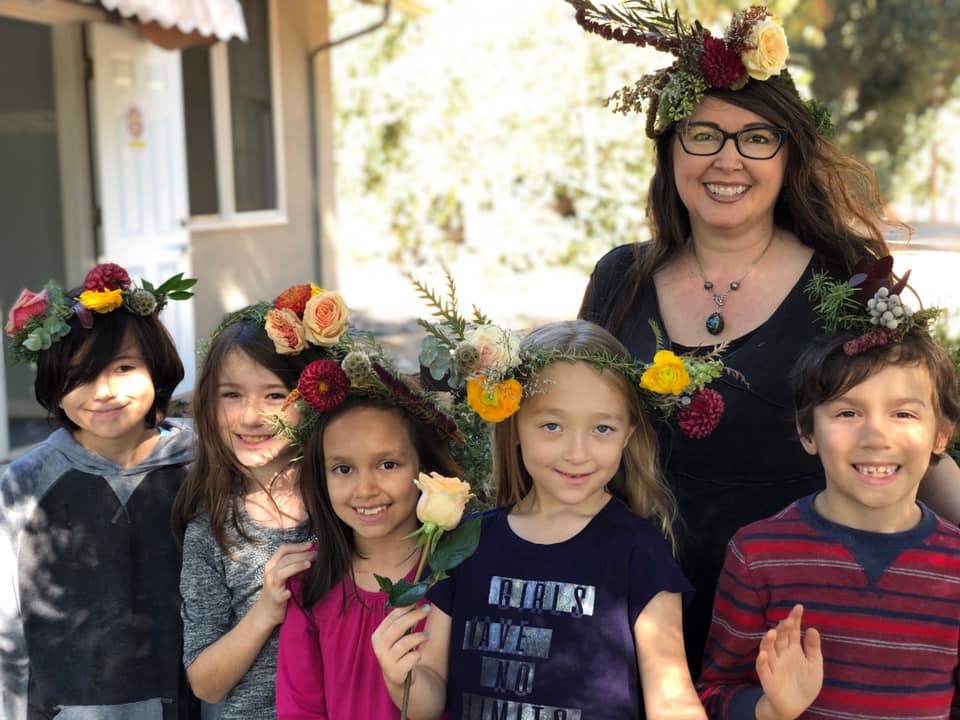

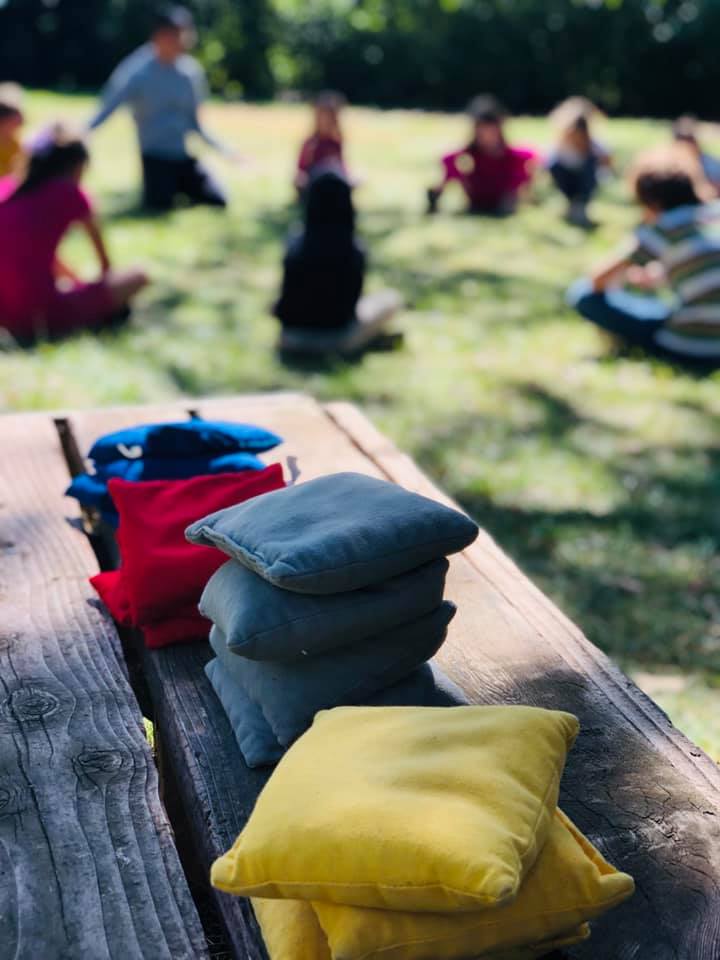
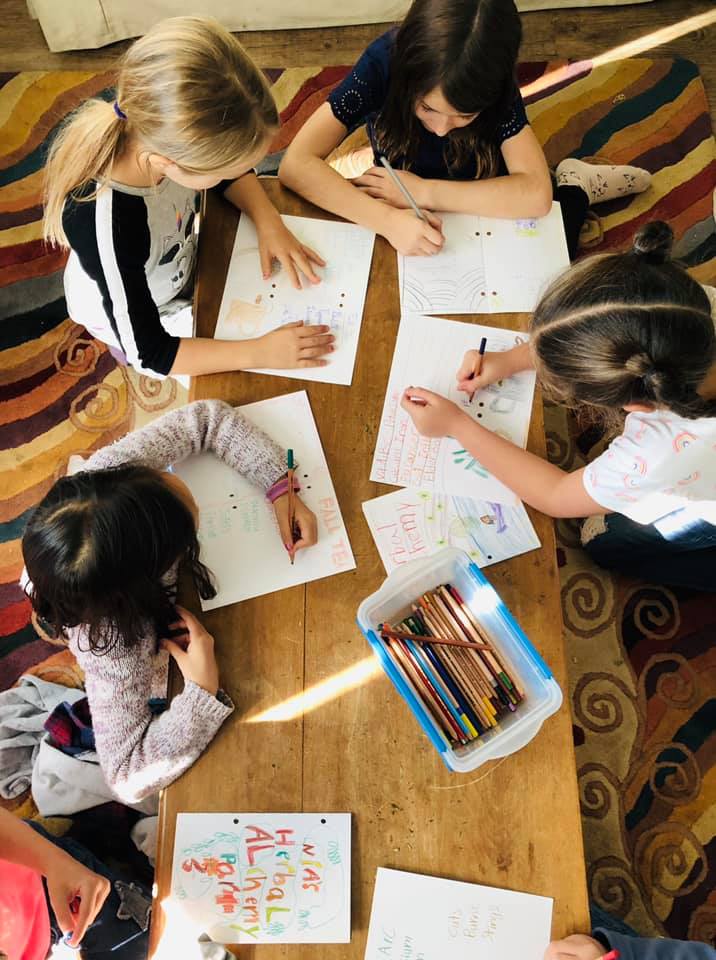

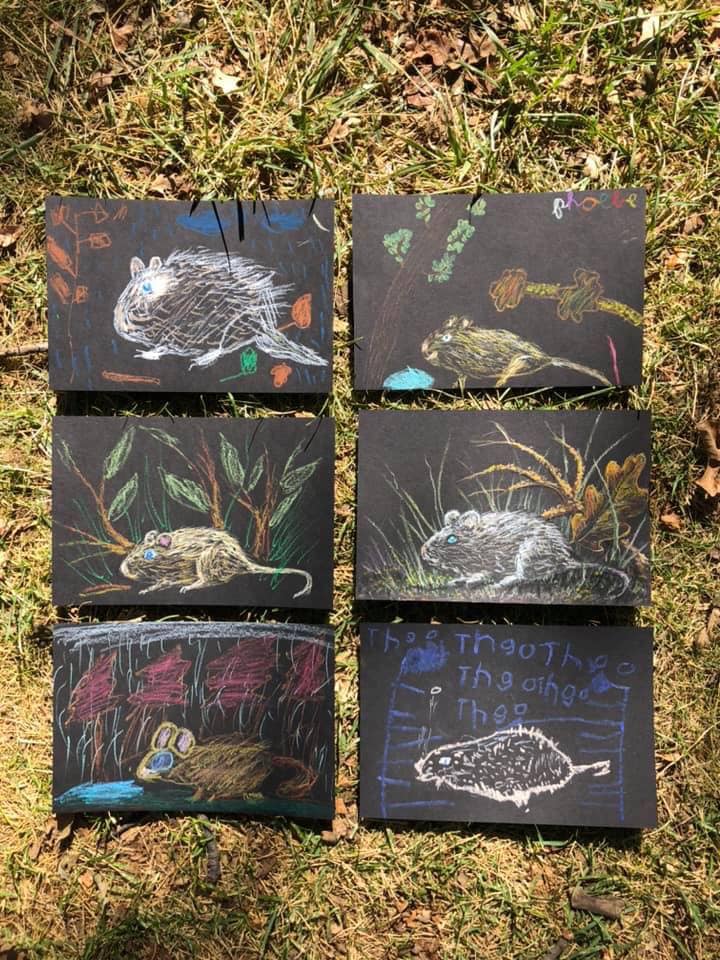




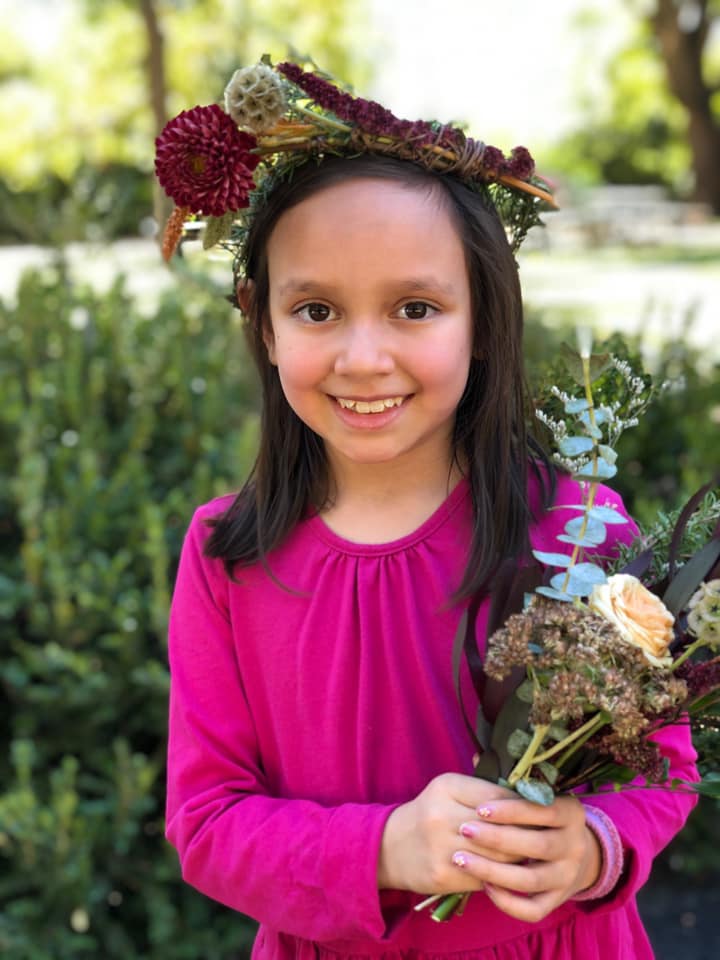



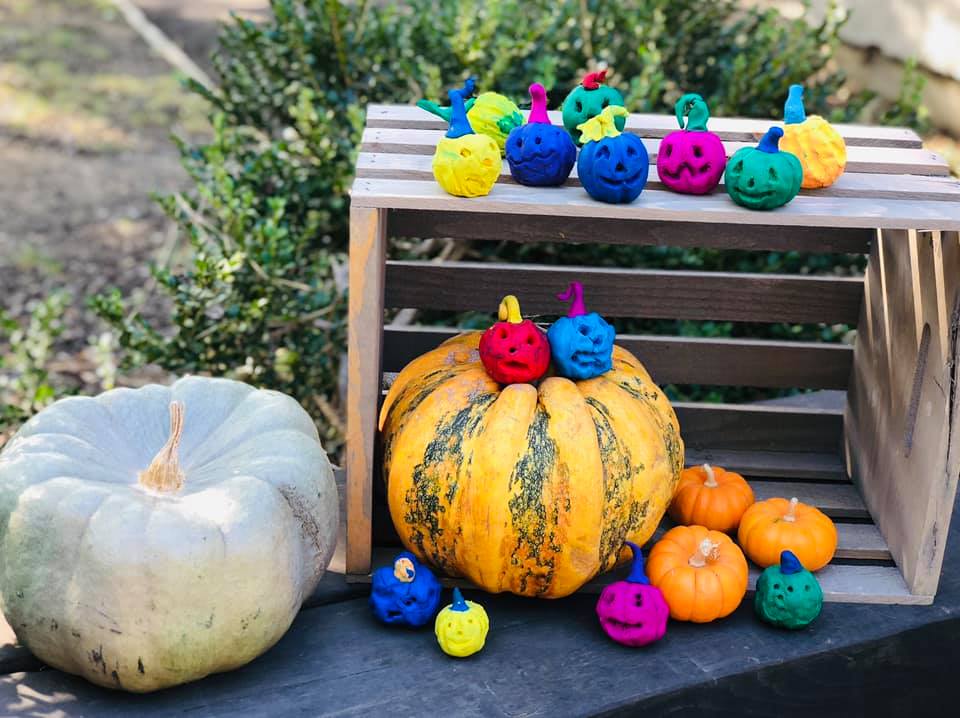

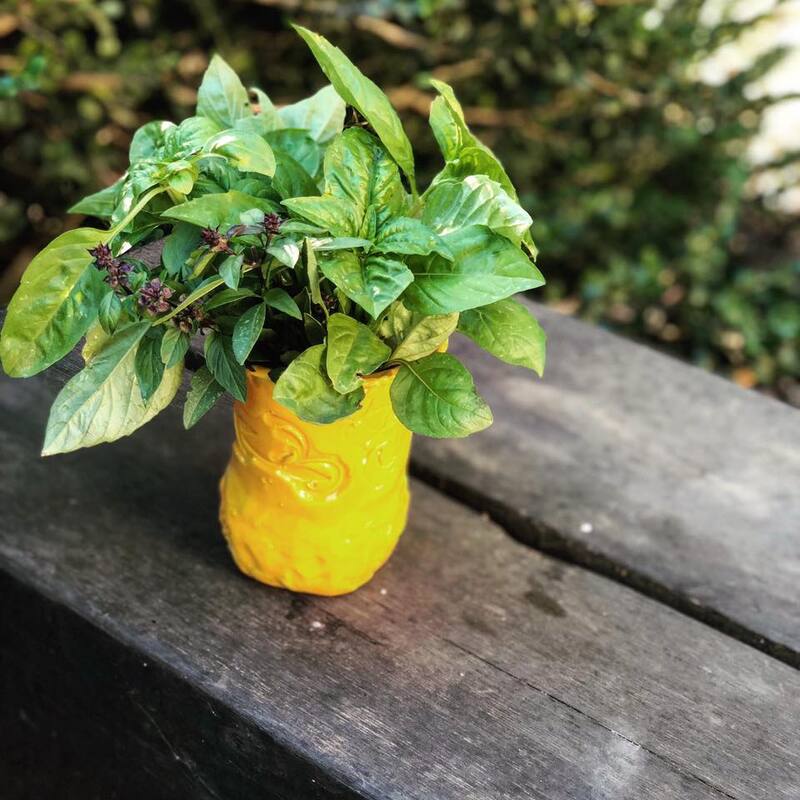


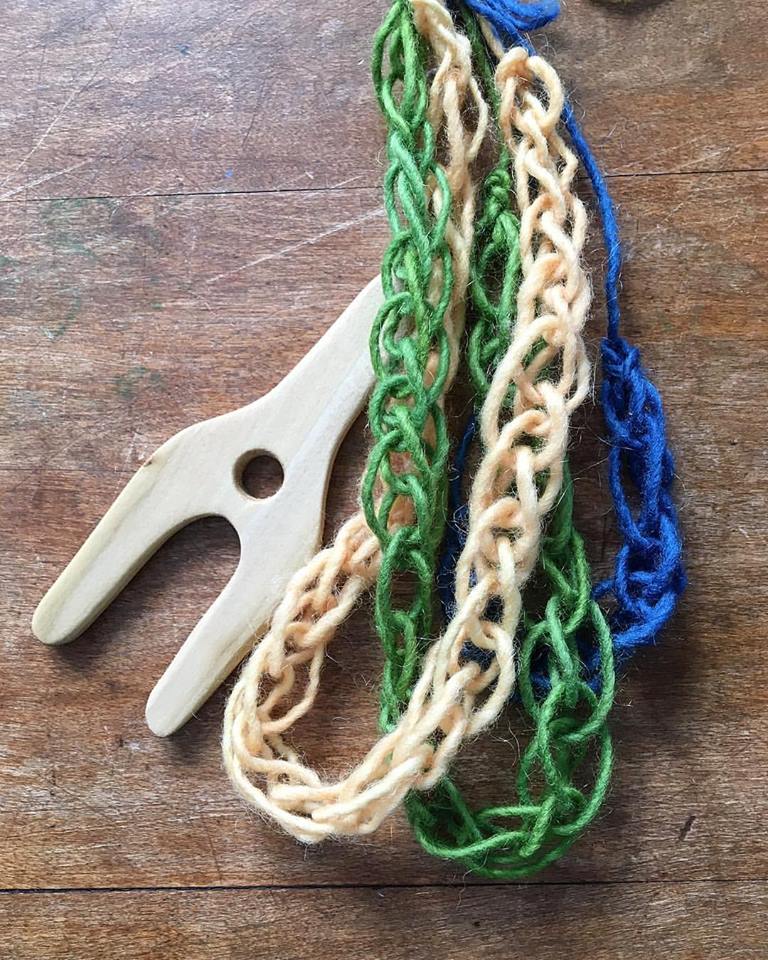
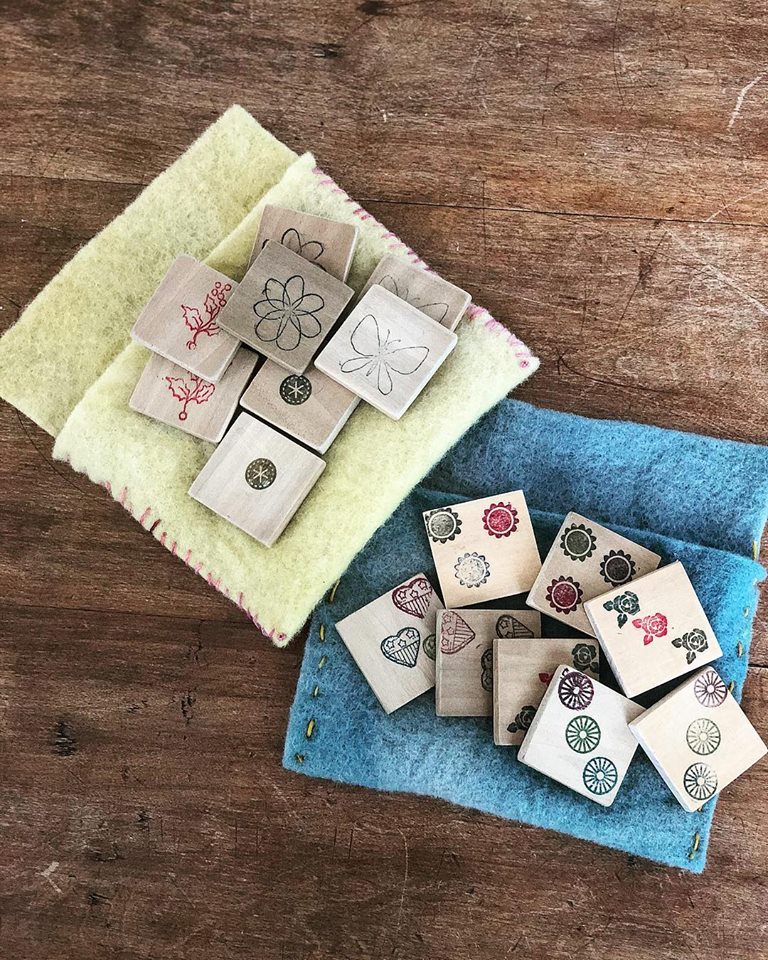
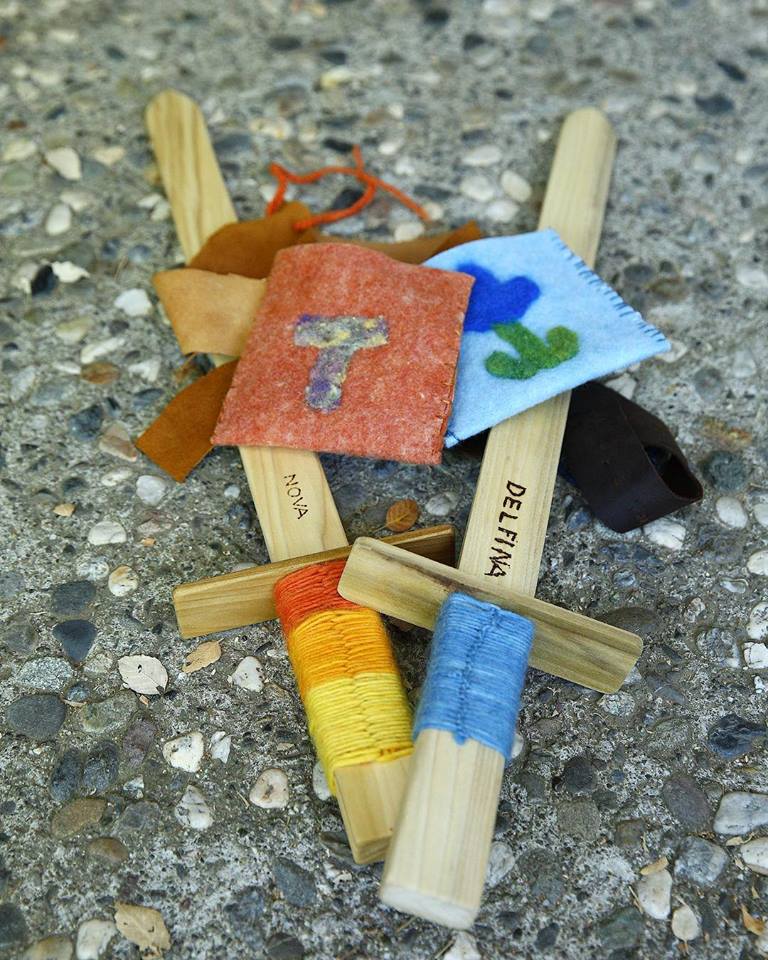
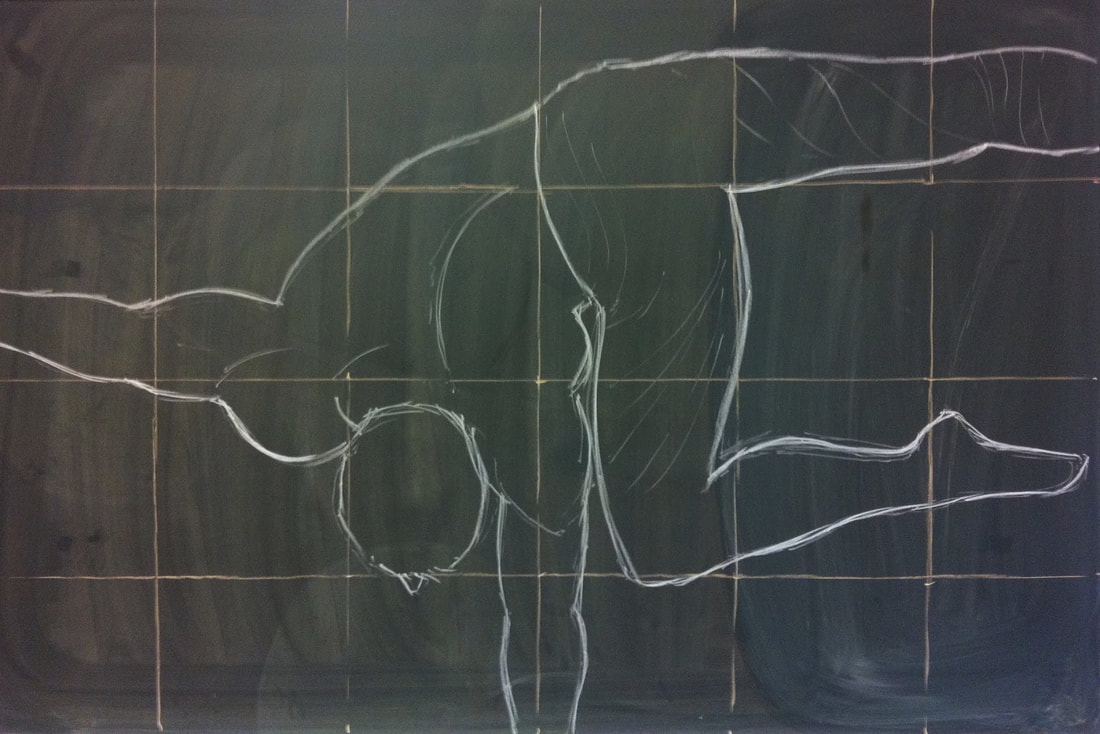

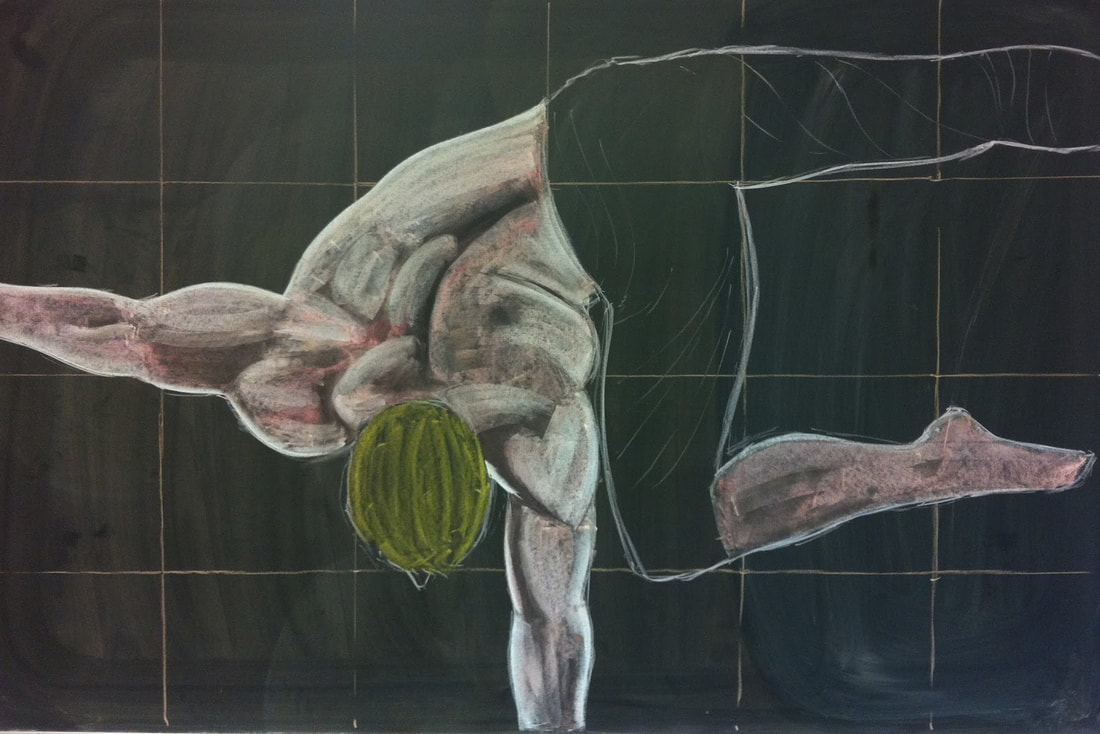
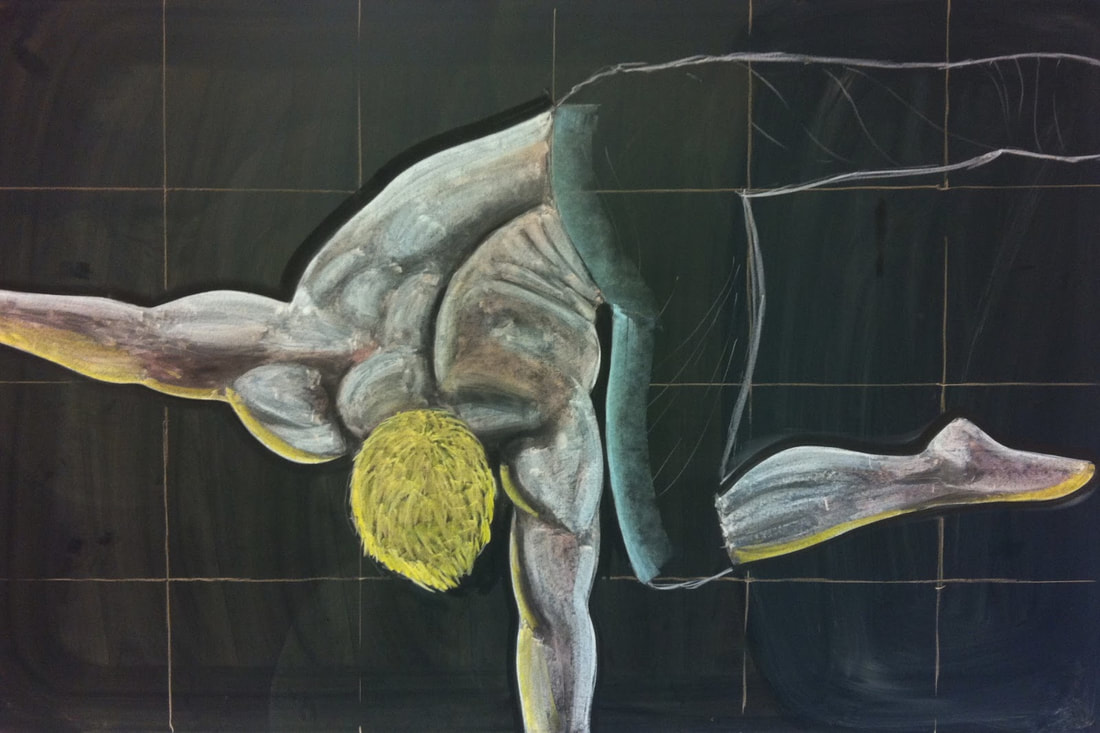
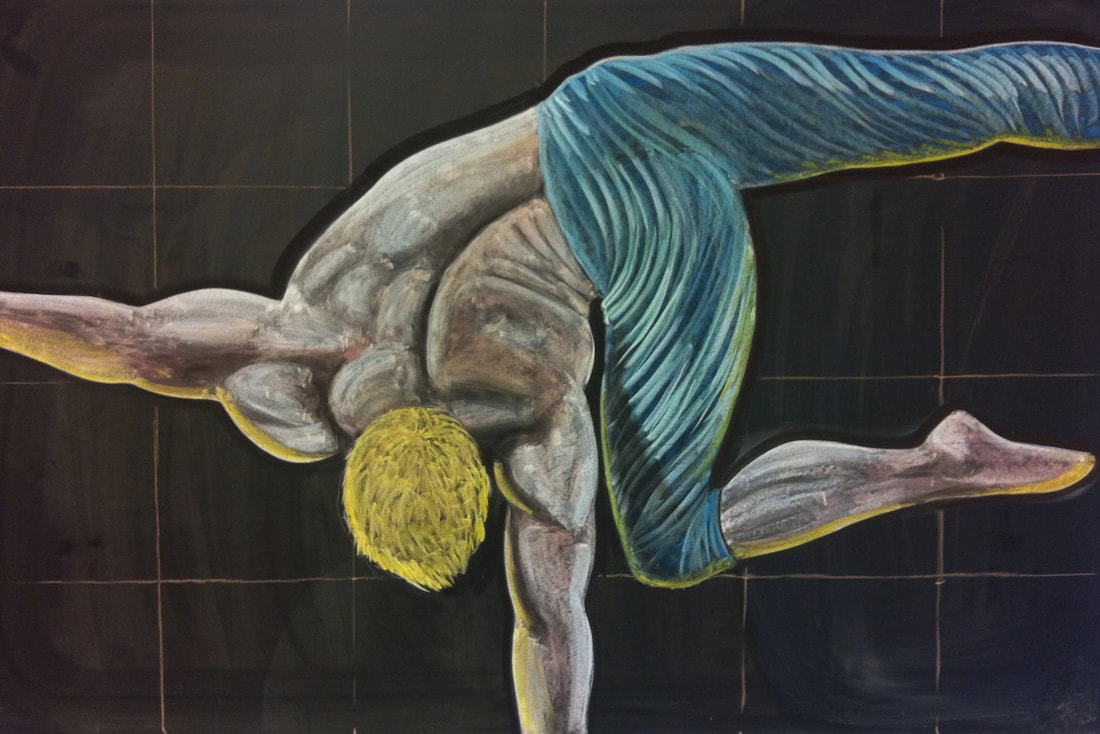

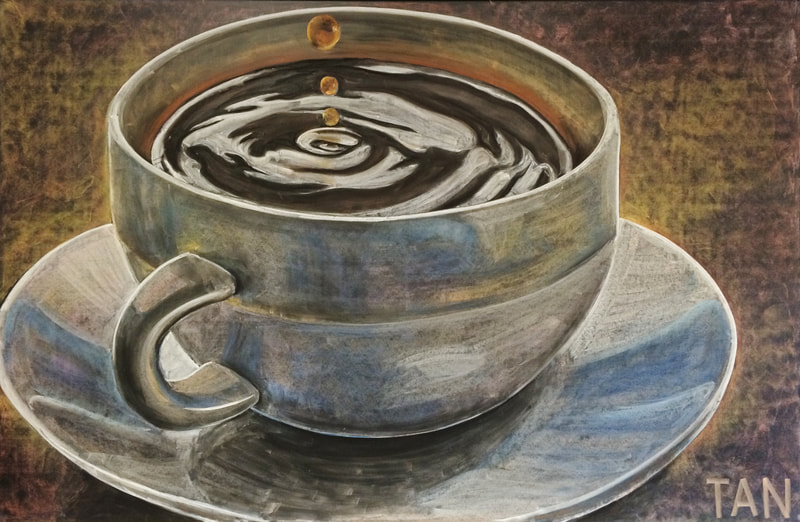


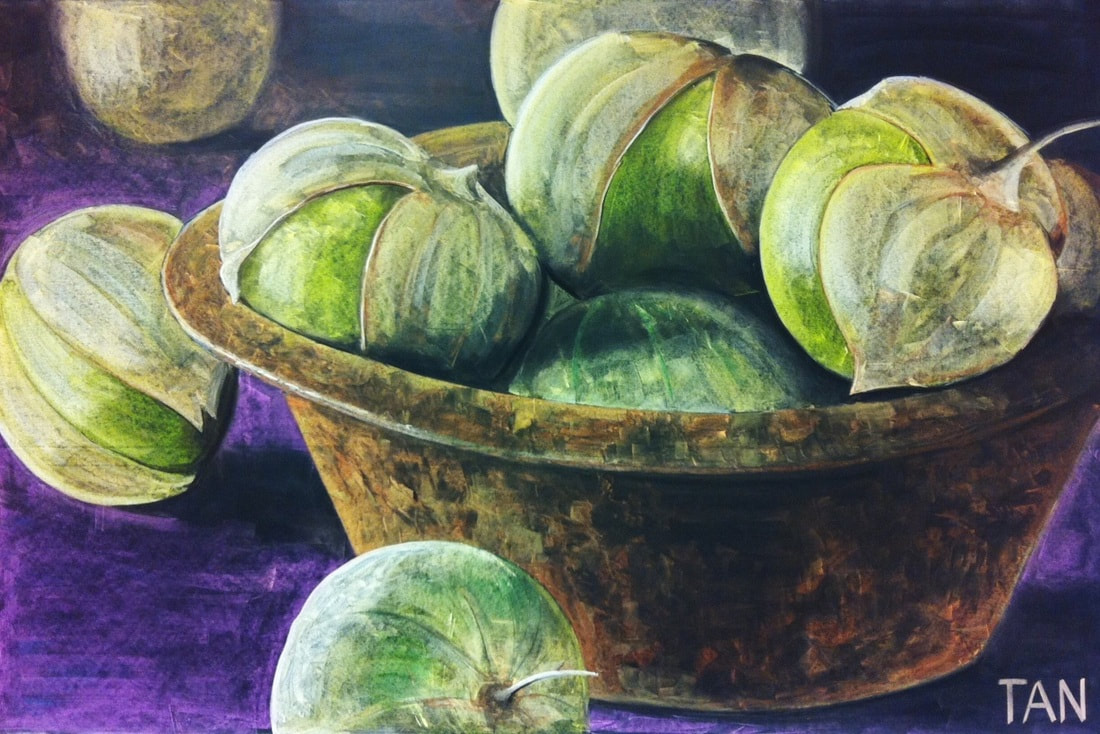
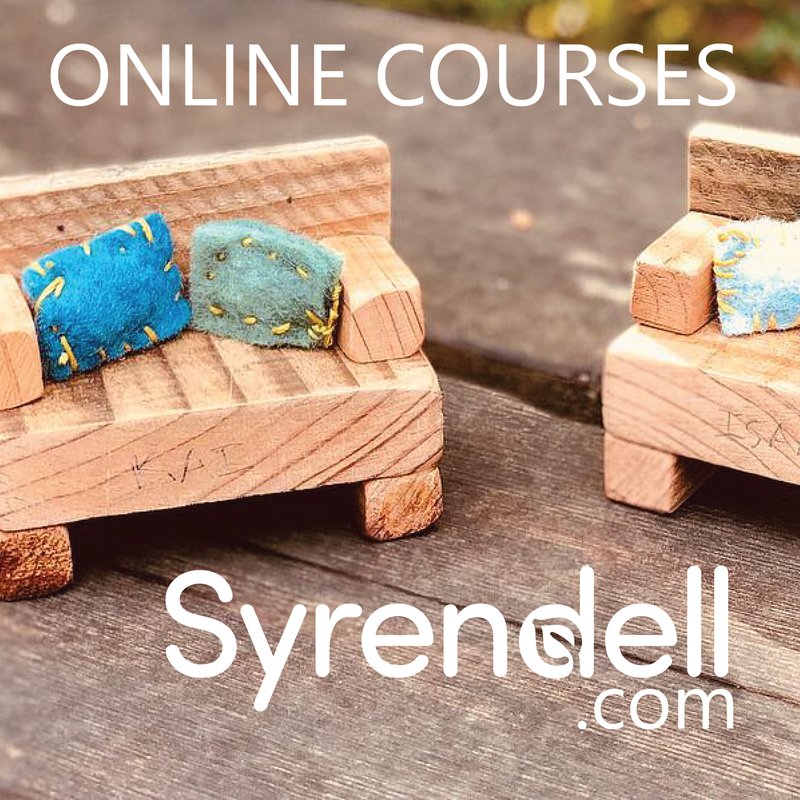
 RSS Feed
RSS Feed
